I hope you guys don’t mind two fava bean recipes in a row. I did warn you!
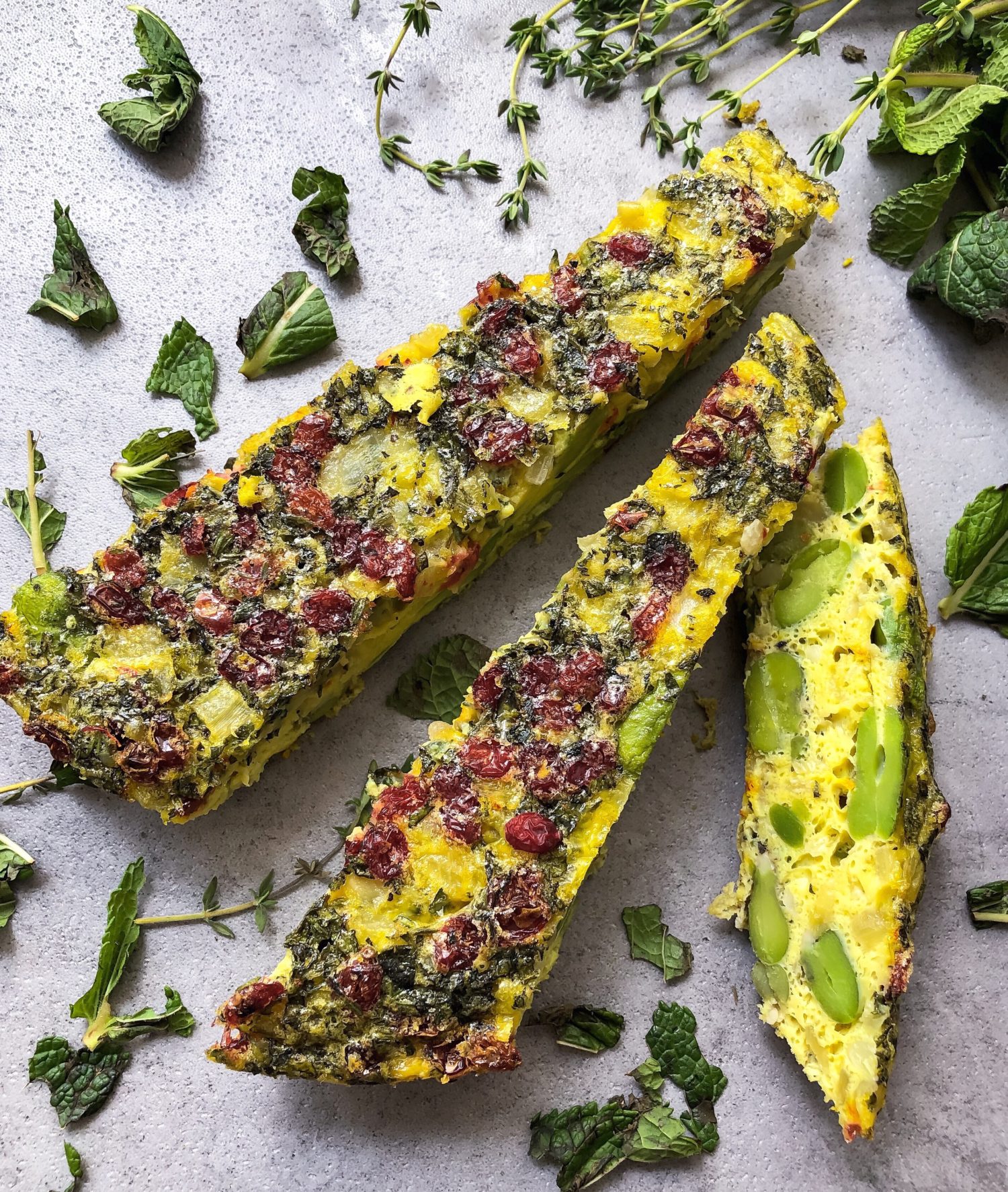 Right now fava beans are doing fantastic, and I’m taking full advantage of them. Yes, I’ve made a salad for you. I will probably make a hummus later in the week with some. Some are going into a vegetable paella. And then there is this Kuku!
Right now fava beans are doing fantastic, and I’m taking full advantage of them. Yes, I’ve made a salad for you. I will probably make a hummus later in the week with some. Some are going into a vegetable paella. And then there is this Kuku!
When I’m looking for fun and fresh recipe ideas involving vegetables, I have two go-to sources: Yotam Ottolenghi, and Diana Henry. Both chefs elevate vegetables in fresh and unique ways, inviting us to try them in exotic recipes from cultures we may not be too familiar with. This recipe is no exception. A couple of years back, I pulled out all my Ottolenghi books, searched ‘fava bean’ and discovered this sweet little frittata recipe in my most favourite book by Yotam: Jerusalem. It is a treasure chest of fantastic recipes. Funny thing is, I already had it marked to try. But I obviously had forgotten all about it. Till then. And now I’m sharing it with you!
Kuku is a Persian frittata. So obviously its main ingredient is one of my faves: eggs. This makes for a fabulous ‘Meatless Monday’ meal, or even an exotic addition to your brunch table. Most often, Kuku is known for having an abundance of herbs, hence the name Kuku Sabzi. Sabzi means herbs, and it shows up in many different recipes. Ghormeh Sabzi is an herb stew that can be vegetarian or with chicken pieces etc. I love Persian cuisine because it isn’t shy to use herbs and spices and combine them in amazing ways.
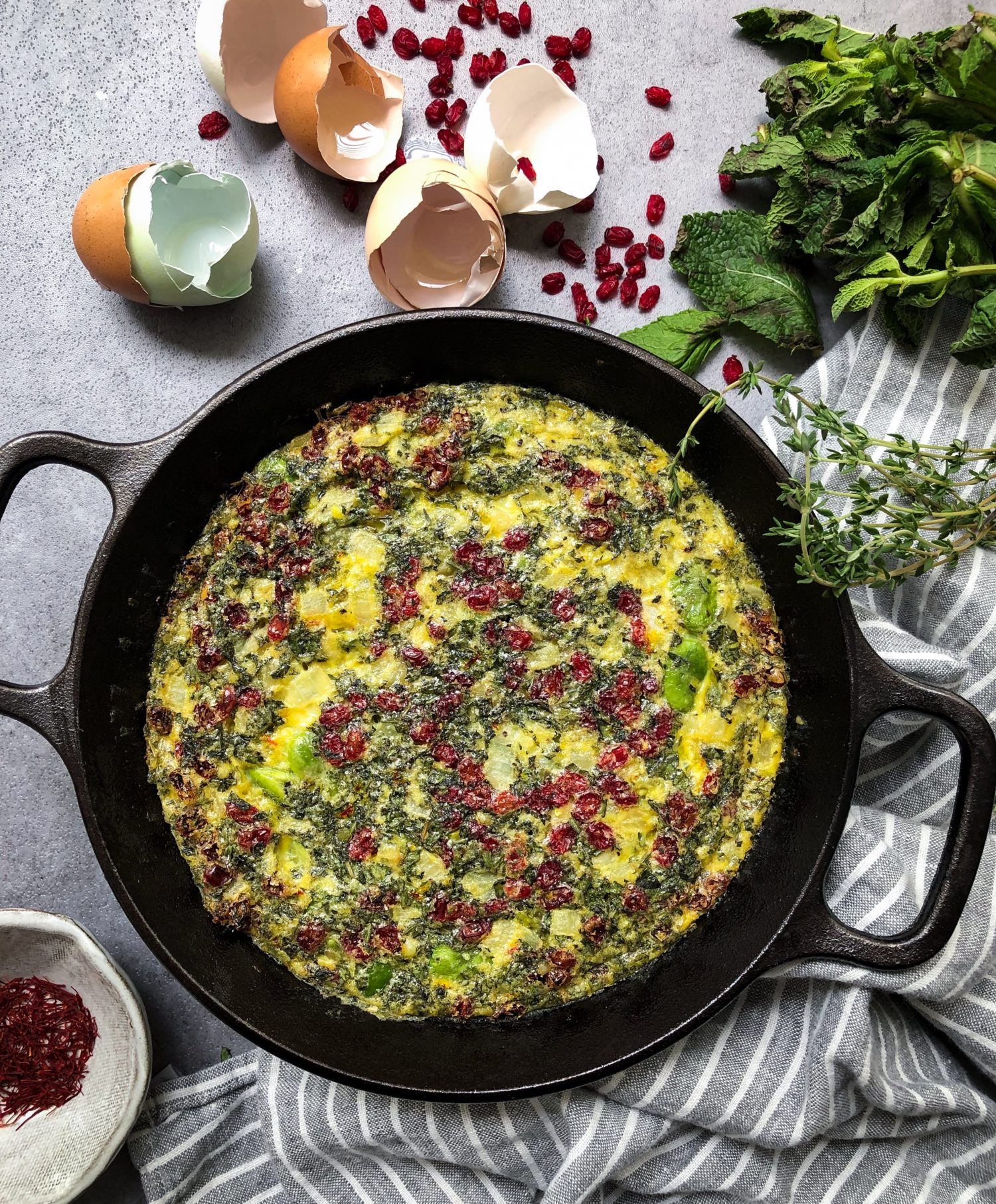
Ottolenghi’s version of this kuku contains another Persian specialty: barberries. That sour, tart little berry that you can find dried or frozen in most Middle Eastern grocery stores. Often they are reconstituted in a bit of warm water and sugar. My love of them goes way back, about 25 years to be exact! A friend had made Zereshk Polo Chicken, and the rice was dotted with this tart little berry. That dish, with saffron, the spiced chicken and the onions and rice made me fall in love with this cuisine for good! If you can’t find barberries, then dried cranberries work just fine. But the real thing is worth it, you could check out these barberries online. You can also see them being used in one of our all time favourite recipes over here at our place: Chicken with Caramelized Onions and Cardamom Rice
In the last post, the Fava Bean, Mint and Manchego Salad, I showed you how to prep fava beans. Once blanched they can be frozen for future uses. Like this lovely frittata. While they are thawing, and the barberries are softening in some sugared hot water, you will prep the third identifying part of this dish. Saffron threads, cream, and a bit of water are brought to a boil and quickly removed to infuse.
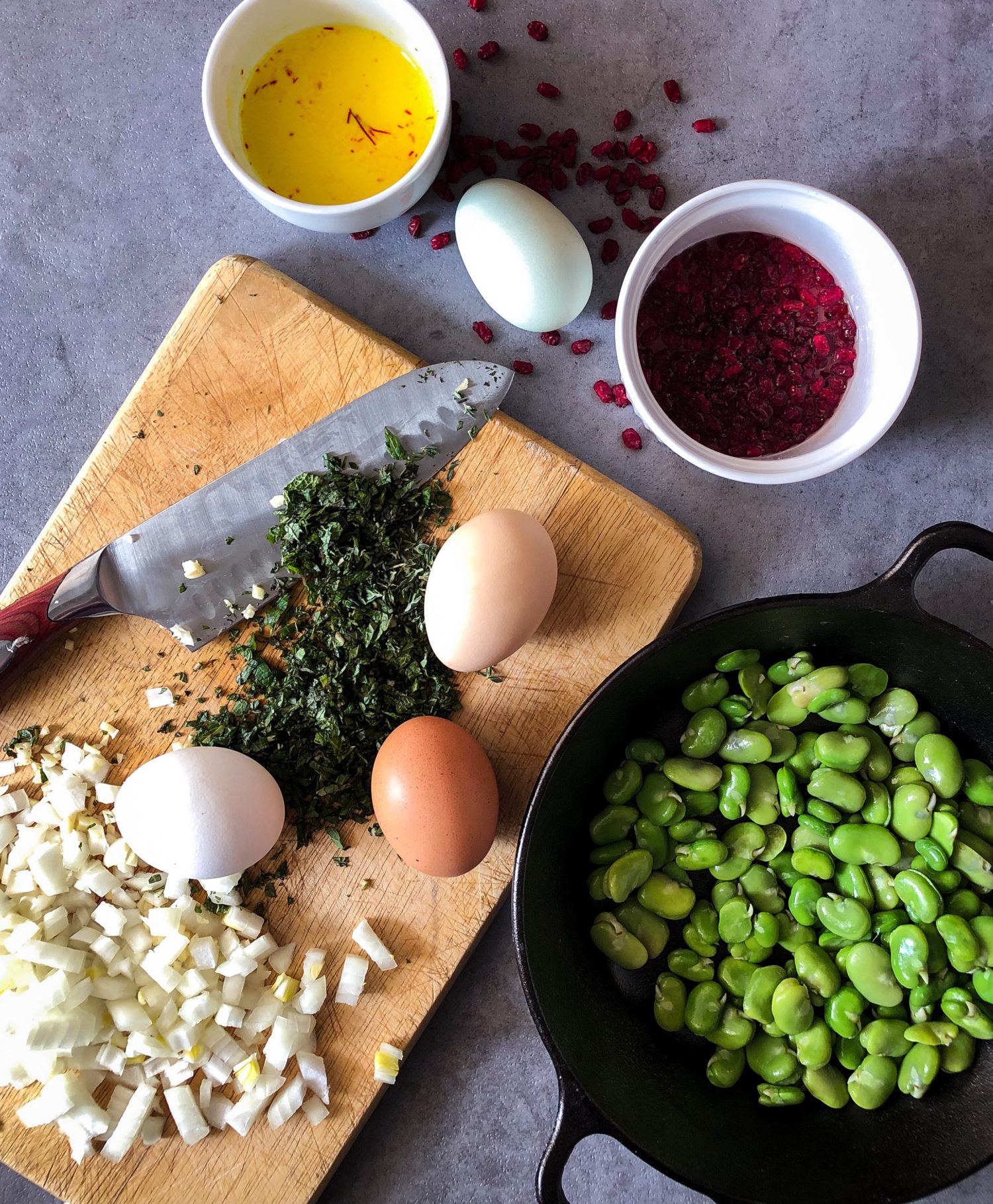
Then it comes time to actually make this baby. It is essential that you use a skillet or frying pan with a corresponding lid. I use a cast iron skillet, but I have a stainless steel lid from one of my pots that fits perfectly, so this is what I use. Chopped onions are sautéed in olive oil in the pan. Then garlic is added. Then the fava beans are added and the pan is removed from the heat. Now you’ll beat the eggs till frothy, add a bit of flour, baking powder and the cooled saffron cream, a copious amount of herbs, and some salt and pepper. Don’t be too shy with the seasoning, everything else is pretty mild, so some salt and pepper are definitely warranted. Finally the onions and fava beans are stirred into the egg mixture.
Wipe the frying pan clean, add some more olive oil, and place it into a heated oven. Leave it in the oven to heat up well. Then remove it and add the egg mixture. Cover it with a lid and bake in the oven for 15 minutes. Then the lid will come off and you will continue baking until the eggs are just set, and the sides have puffed up (don’t worry, they will settle down as the kuku cools).
Here is where I take a diversion from the recipe. Ottolenghi says to let the kuku cool for five minutes and then invert it onto a platter. I don’t do this. For the simple reason that all the lovely barberries and herbs have floated to the top during the baking process. Why would I hide this lovely top by serving it upside down? Now, if he had mentioned turning it right side up afterwards, then I would get it. So, I just bring the pan to the table, if I actually want everyone to see it. Most often, I just slice it up and serve in wedges or narrow slices. The beauty of this recipe is that a frittata, and quiche for that matter, is that it is really best served warm, not hot. Even room temp is great. So you can make this, let it cool, slice it up, and plate it on a pretty platter for guests or family. And make sure the pretty side is up! And to make sure that the slices come out perfectly, I use a small off-set spatula to get underneath and release the eggs from the pan. Because it’s never pretty if bits of the frittata remain behind stuck to the pan.
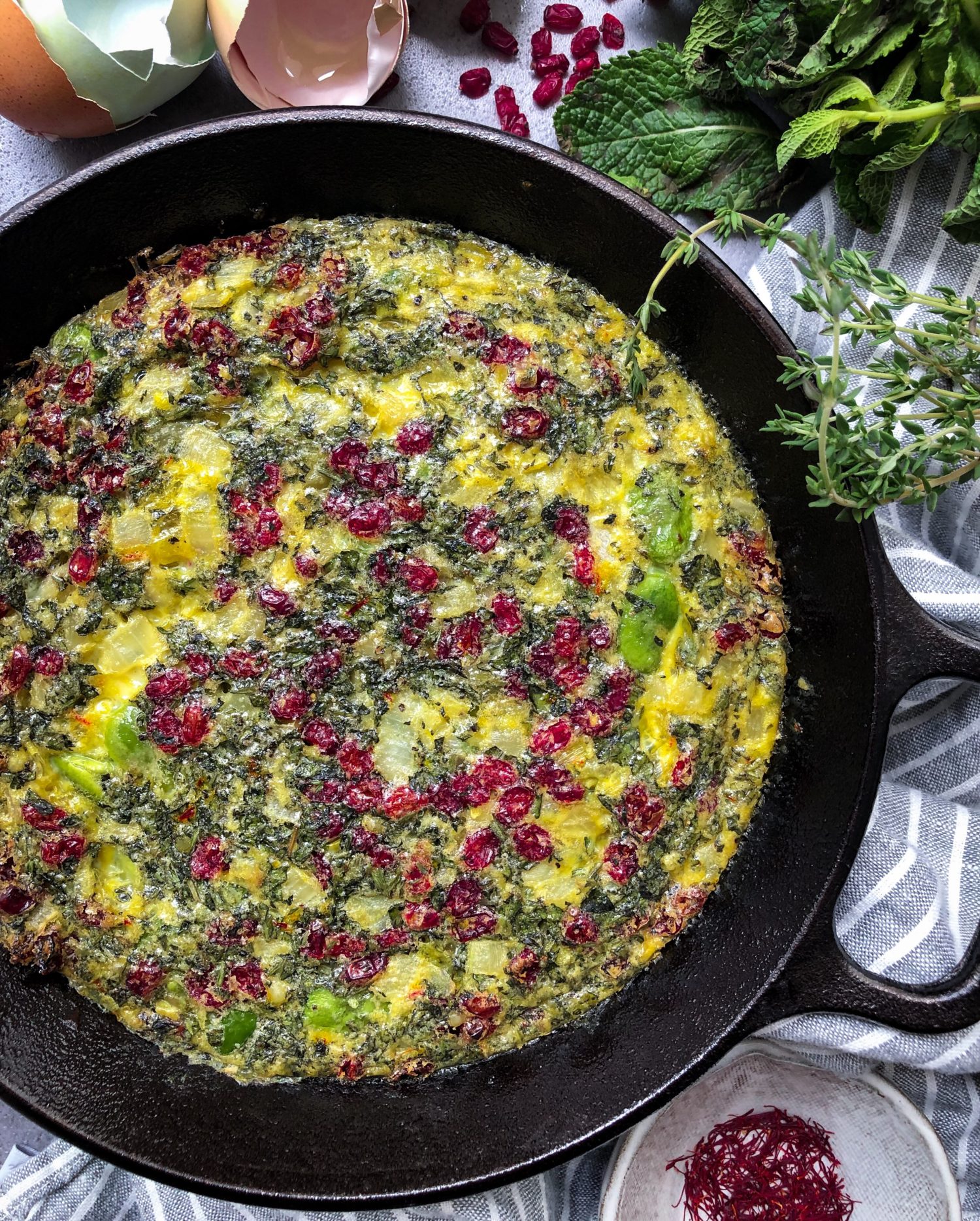
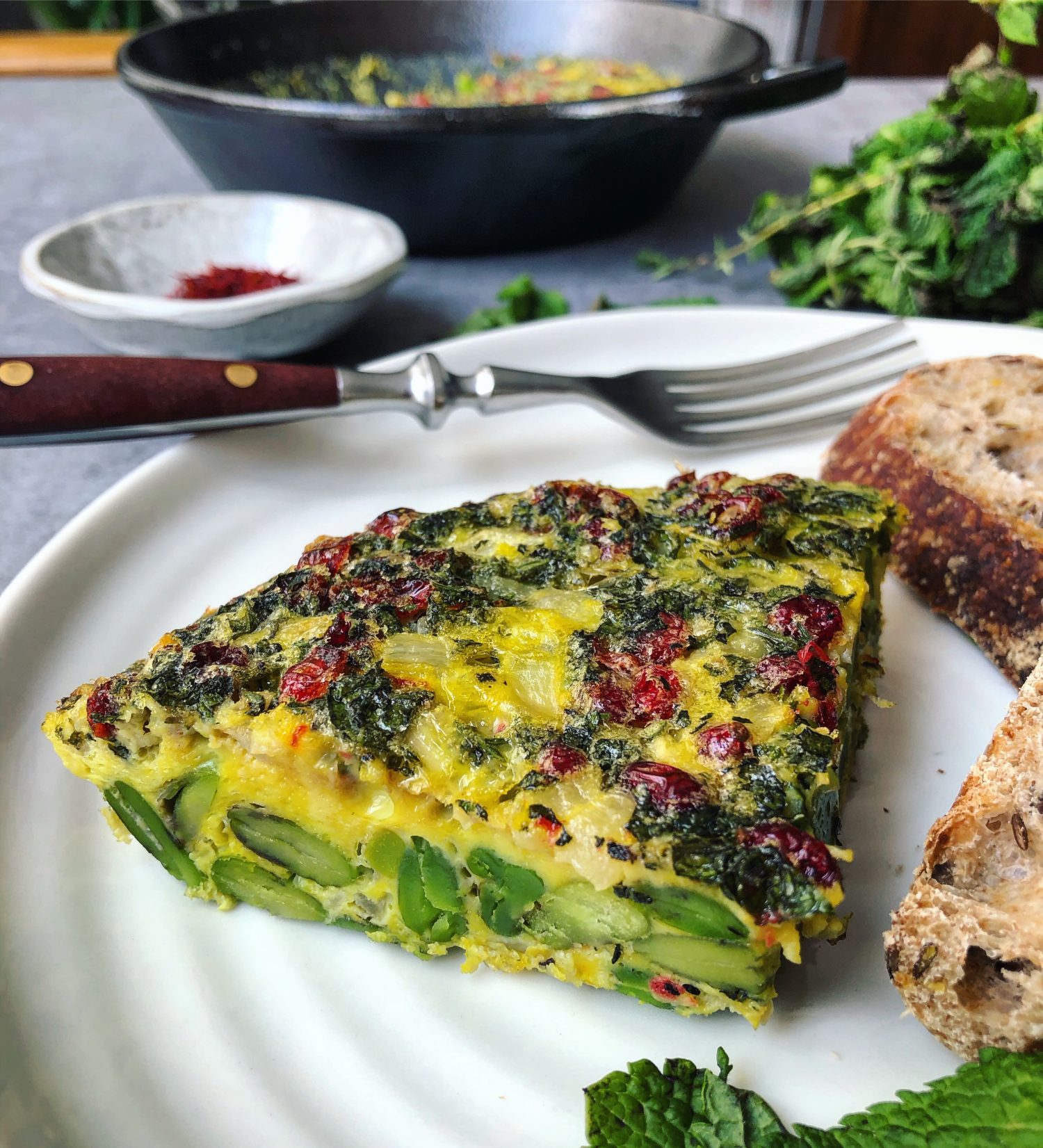
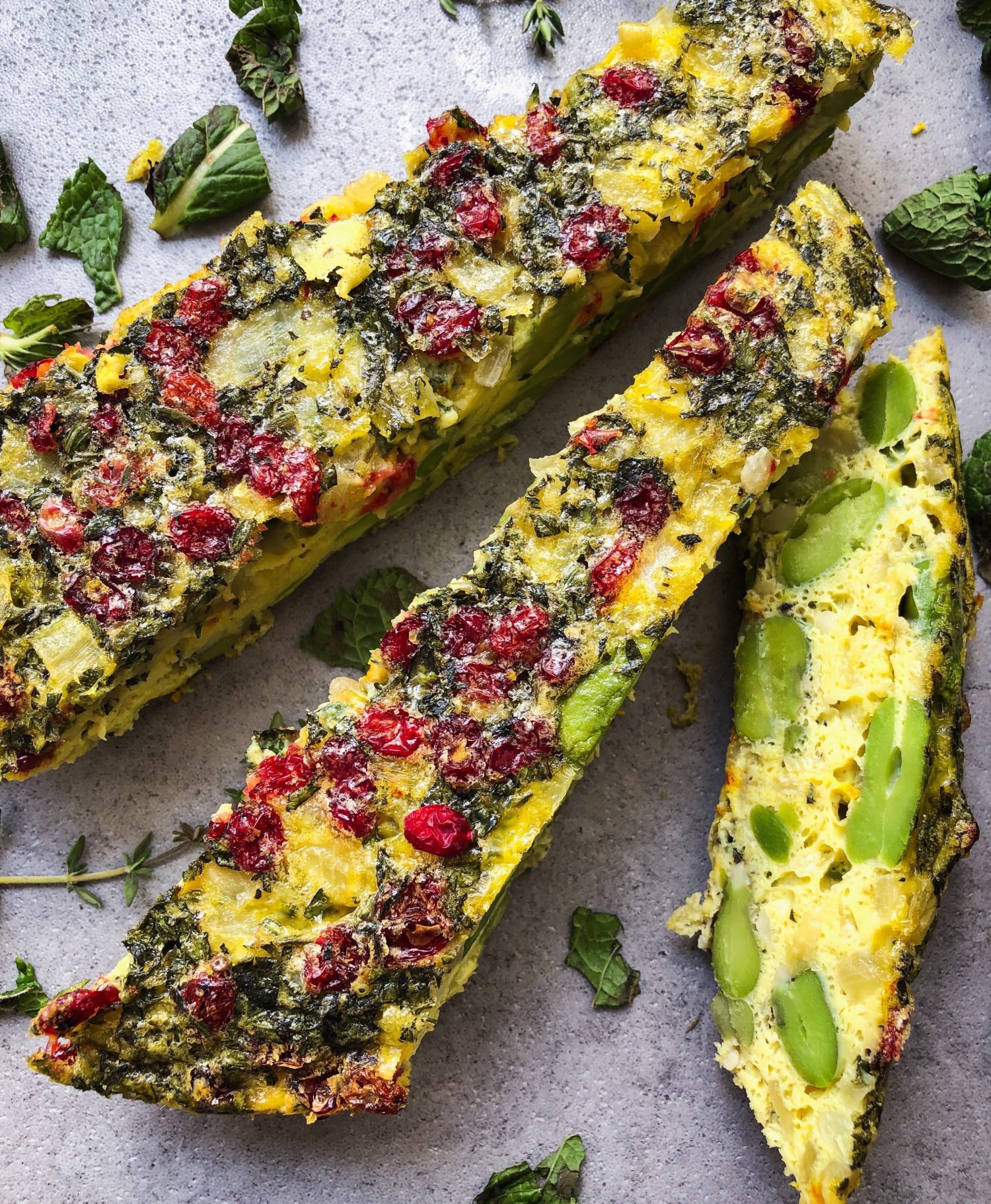
The final dish is bright and tart, thanks to the barberries, woodsy thanks to all the herbs, creamy thanks to the baked eggs, and filling thanks to the nutty fava beans. Serve this dish with a side of warmed pita and cumin yogurt and you have a breakfast fit for Persian princess!
When I say that there are copious amounts of herbs in a kuku sabzi, I love that you can pretty well use your own favourite combination of herbs that you may have on hand. The traditional choices are dill, parsley, mint, thyme, cilantro, even baby spinach would work. I use whatever happens to be on hand in the fridge. But I usually try and make sure that mint is one of the key herbs in the dish, because mint works so well with the fava beans and the barberries.
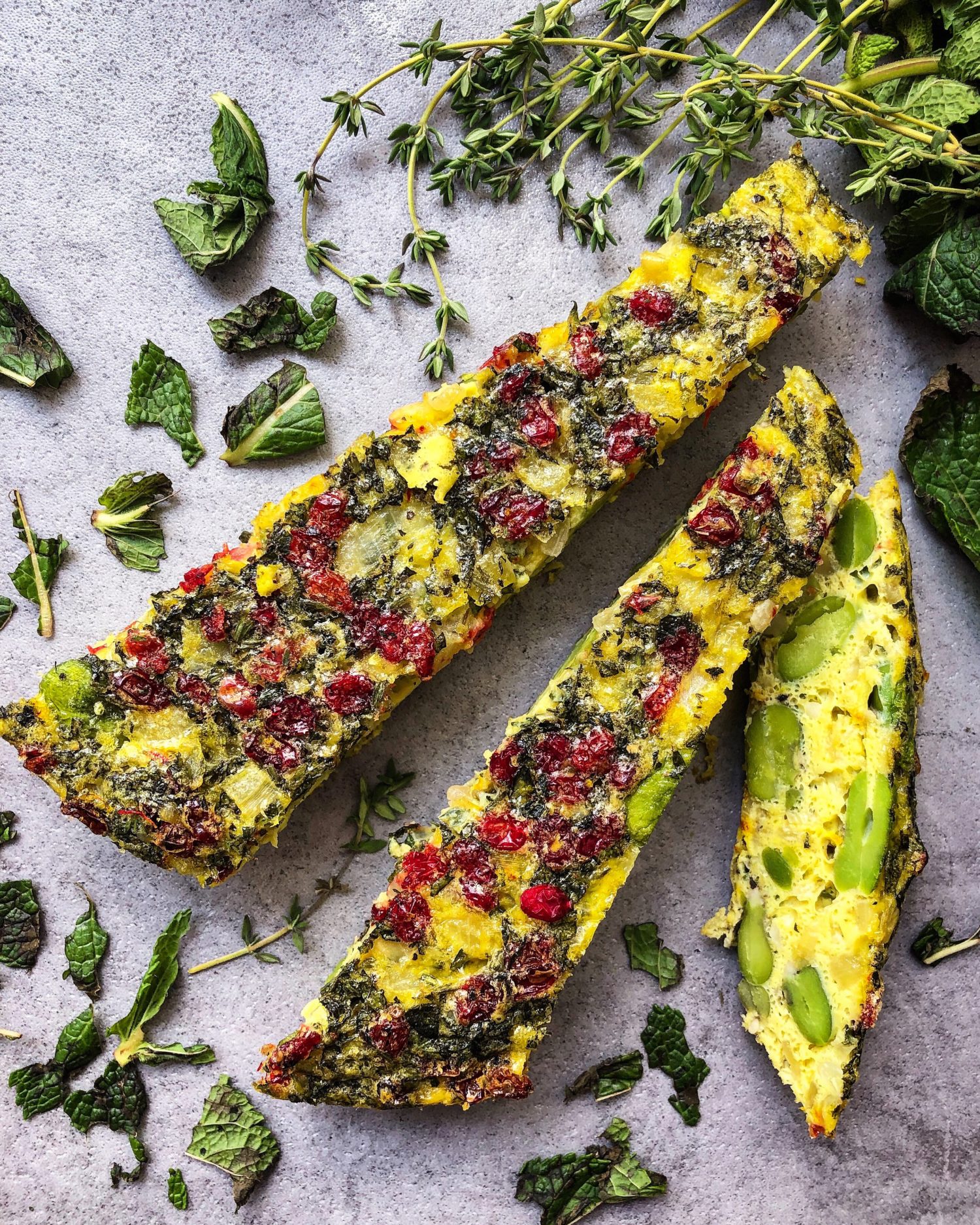
I hope you try this, I know it may sound like a strange combination of ingredients at first, but trust me, they really play well together! And it’s such a fun way to showcase Springtime fava beans. But remember, if you’ve taken the time to freeze some beans, this bright and festive dish can be yours in November as well!! Embrace Kuku. Because Frittata is so 2015!!
Love Jen
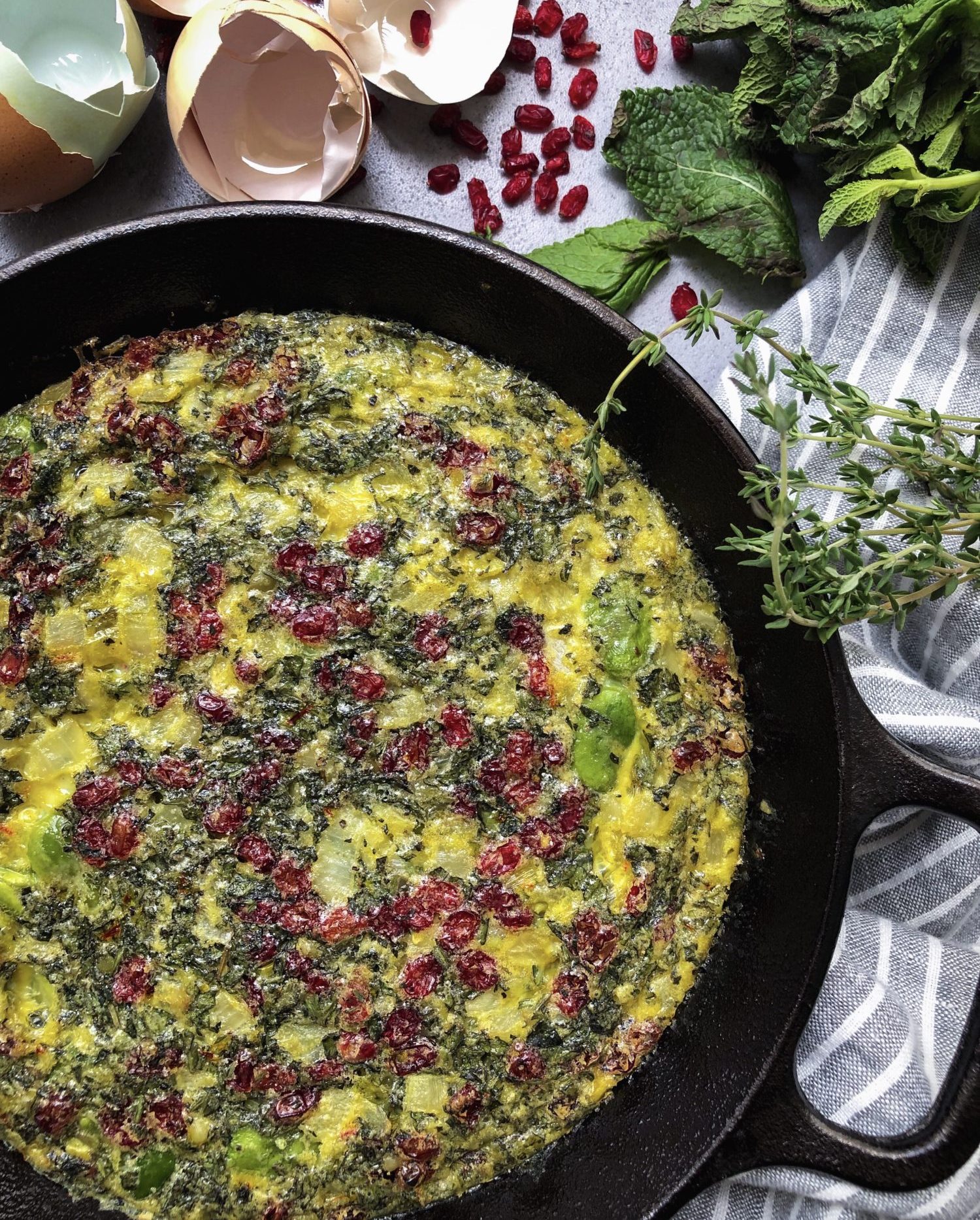
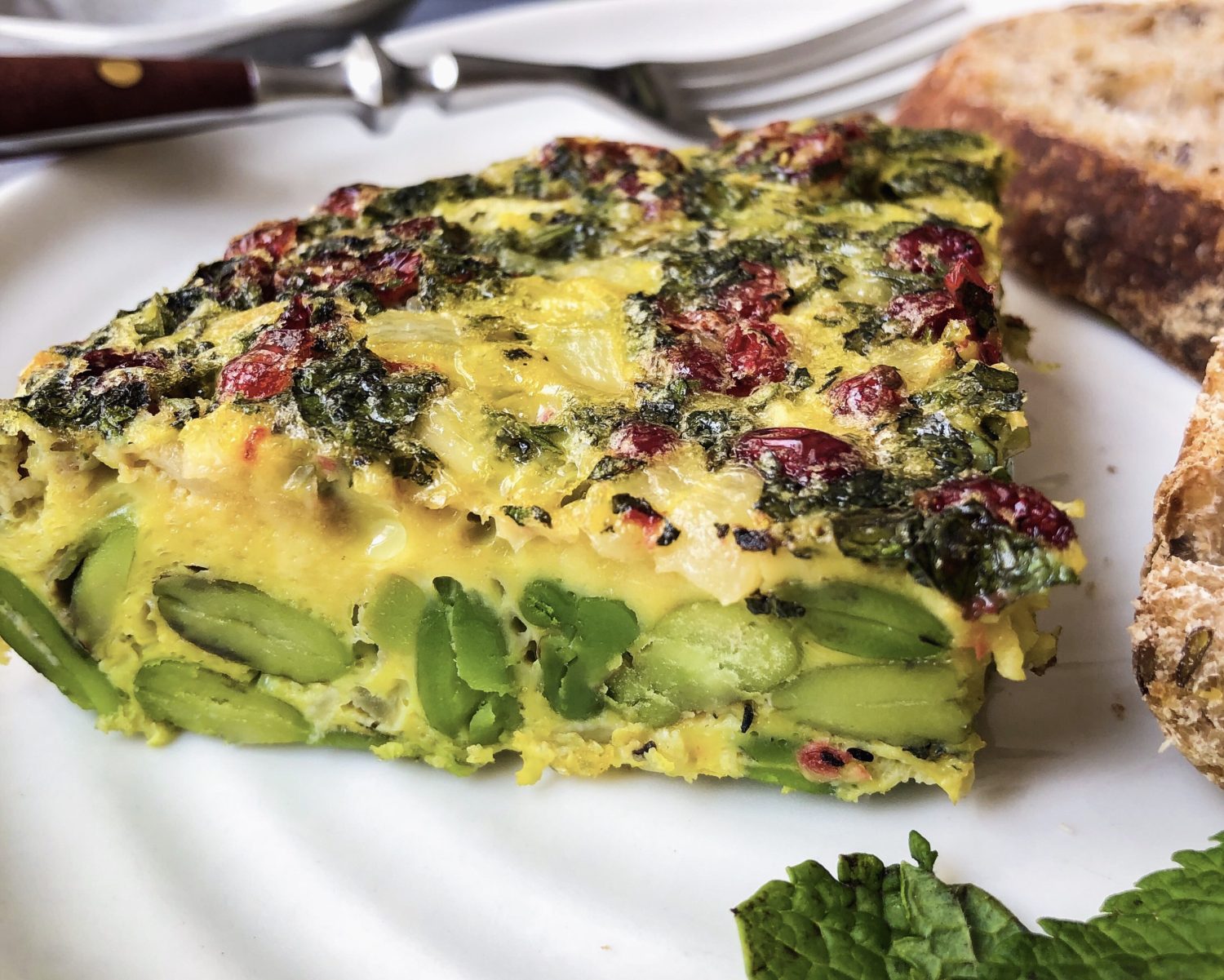

Fava Bean Kuku, Persian Frittata
A creamy egg frittata-like dish is given the exotic treatment with bright and tart barberries, a plethora of herbs, and nutty fava beans. This would make a great vegetarian dinner option, or sliced up, it will be a hit on your next brunch table.
Ingredients
- 3 tbsp heavy cream
- 1/4 tsp saffron threads
- 2 tbsp cold water
- 2 cups blanched and peeled fresh or frozen fava beans if frozen, then simmer in hot water for 1 minute, drain
- 5 tbsp boiling water
- 2 tbsp fine granulated sugar
- 5 tbsp dried barberries you can use dried cranberries, chopped small. If using cranberries, you will not need to sweeten them in sugar and water
- 5 tbsp olive oil
- 2 medium onions finely chopped
- 4 cloves of garlic minced
- 7 large eggs
- 1 tbsp AP flour
- 1/2 tsp baking powder
- 1 cup dill chopped
- 1/2 cup mint chopped
- kosher salt and cracked black pepper
Instructions
-
Preheat the oven to 350F (180C)
-
Bring the cream, saffron and water to boil in a small saucepan. Immediately remove from the heat and allow the saffron to infuse the liquid for 30 minutes.
-
If your beans are fresh, blanched and peeled and came from the fridge, they are fine as is. If you are using frozen blanched beans, then simmer them in plenty of hot water for one minute. Drain.
-
Pour the 5 tbsp of boiling water into a small bowl. Add the sugar and stir to melt. Add the barberries and let them soak for 10 minutes. Drain and set aside.
-
In a 10 inch (25 cm) skillet with a lid, heat 3 tbsp of the olive oil over medium heat. Add the onions and cook for about 4 minutes. Stir occasionally.
-
Add the garlic and cook for another 2 minutes.
-
Stir in the fava beans and set the pan aside off the heat.
-
In a large bowl, whisk the eggs till frothy. Add the flour and baking powder and beat till incorporated.
-
Add the saffron cream, the herbs, 1 1/2 tsp salt, 3/4 tsp pepper and whisk well.
-
Finally stir in the barberries, and the fava beans and onion mix.
-
Wipe the skillet or pan clean with paper towel, and coat with the remaining olive oil.
-
Place the pan into the hot oven and let it heat up for 10 minutes.
-
Take out and pour the egg mixture into the pan, cover with a lid and bake for 15 minutes.
-
Remove the lid and continue baking for another 20-25 minutes, until the eggs are just set.
-
Remove from the oven and let it set for at least 5 minutes. You can invert onto a platter, but I would much rather slice and use an offset spatula to remove the slices to a platter for serving. You can slice them it into wedges or thin slices.
-
This is best served warm or at room temperature.
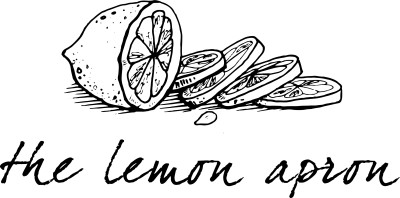
Looks great but – did you leave out the fava beans from the recipe??
Hi Arvind, you had me worried with your comment! But I just checked the recipe, and no, the beans are there from the beginning to the end of the recipe. Love Jen
I added 2 eggs for a total of 8 and I’m glad I did – it would have been pretty skimpy otherwise. Also threw in some chopped chard for additional greens. Excellent recipe
Hi there, definitely, there is always room for more eggs, especially since sizes vary so much. Happy you enjoy this unique dish!